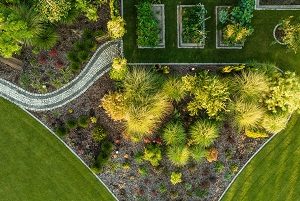By Amanda Duncan, President, PartnerOne Environmental
 Spring has sprung and it is a busy time for the thousands of landscaping companies located throughout the country. Landscaping contractors are involved in several different types of services; some companies may perform all of them and some may specialize in just a few. Landscaping projects are ongoing year-round, no matter the temperature outside, but spring always brings new construction, which means new commercial, industrial, and residential projects.
Spring has sprung and it is a busy time for the thousands of landscaping companies located throughout the country. Landscaping contractors are involved in several different types of services; some companies may perform all of them and some may specialize in just a few. Landscaping projects are ongoing year-round, no matter the temperature outside, but spring always brings new construction, which means new commercial, industrial, and residential projects.
As mentioned above, landscapers can wear many different hats. They provide lawn/garden maintenance, which usually involves pesticide/herbicide application, sometimes on a daily or weekly basis depending on the client. Landscapers install and maintain irrigation systems as well as decorative ponds and water features. Drainage system repair and erosion control are incorporated into most landscaping projects. They also install and maintain hardscapes as part of their landscaping services; hardscapes include retaining walls, driveways, paved areas, stairs, or any other component using hard materials.
The many different operations landscapers perform have something in common: pollution exposures! Any time soils are disturbed, the potential to create a pollution condition exists. Landscapers are playing in the dirt on a daily basis―planting flowers/shrubbery and excavating for irrigation systems, hardscapes, water features, and drainage piping. During the course of this work landscapers could disturb unknown or naturally occurring contaminants in the soils, damage utility lines such as a sewer/septic system, or create surface water runoff issues should erosion control containment systems not be correctly installed. They may also bring contaminants onto the site unknowingly via fill dirt, fertilizer, mulch, and other materials.
Landscapers are also using various chemicals as part of their normal day to day operations. Pesticide and herbicide application is most commonly used. While we take this service for granted as part of a landscaper’s job, the simple truth is that a substance that is considered a pollutant is knowingly being applied. Chemicals, soaps, and dyes may also be used for water feature maintenance. Whether this work is performed in a residential or commercial setting, usually these sites are easily accessible by third parties. If chemicals are not mixed correctly or mishandled while being applied, the consequences could be far reaching. Air, soils, and groundwater are all pathways in which the chemicals can be carried away from their intended location, affecting humans, wildlife, and other natural resources.
Another exposure landscaping contractors face is the transportation and storage of their equipment, materials, and chemicals. An over the road spill could create a hazardous condition requiring extensive cleanup. The storage of materials and chemicals is also a concern. A landscaping firm’s owned premises most likely stores various equipment and materials that could cause a pollution release affecting the premises itself, as well as surrounding properties.
The landscape service industry continues to thrive, with contractors and customers alike seeing green. We all want our gardens to grow, so being aware and managing environmental risk should be a top priority for this industry and its clients as projects move forward. For more information or to discuss environmental insurance products for landscaping contractors, please contact us.
Need a quick CPL indication for your landscaping contractor? We can help. Send us an Acord application and we will provide an indication of cost within 2 hours. Click here to start.
